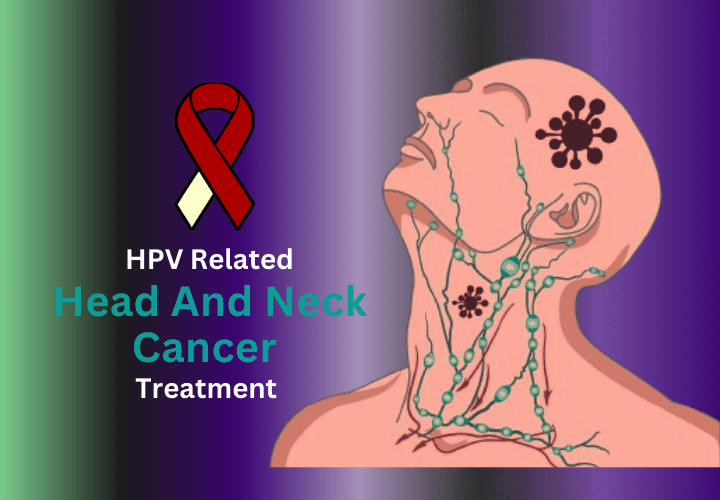Head and neck cancers, encompassing malignancies affecting the oral cavity, larynx, pharynx, nasal passages, and salivary glands, constitute a significant health burden in India, often overshadowed by other cancer types. Oral cancer, in particular, represents a substantial proportion of cancer diagnoses among Indian men, largely attributed to widespread tobacco and alcohol use. A critical challenge lies in the frequent oversight of early symptoms, leading to delayed diagnoses and hindering treatment efficacy and patient recovery. This delay underscores the urgent need for increased awareness and improved early detection strategies.
Early recognition of head and neck cancer symptoms is paramount for successful treatment outcomes. Initial manifestations are often subtle and easily dismissed, including non-healing sores, red or white patches in the mouth, difficulty swallowing, vocal changes, neck lumps, unexplained weight loss, and persistent unilateral ear pain. These symptoms can precede a formal diagnosis by weeks or months, particularly in individuals who neglect regular ENT or dental check-ups. A pervasive tendency to trivialize these signs as minor or transient ailments, especially among tobacco users who may attribute oral changes to their habit, contributes significantly to delayed diagnosis. Educating both the public and frontline healthcare providers about symptom recognition is crucial for bridging this gap and promoting timely intervention.
The risk landscape for head and neck cancers in India is dominated by tobacco use, whether smoked or chewed. Alcohol consumption exacerbates this risk, especially in conjunction with tobacco. Furthermore, HPV-related throat cancers are increasing in incidence, alongside cases linked to poor oral hygiene and prolonged sun exposure. While middle-aged men remain the demographic most at risk, a concerning trend is the rising diagnosis rate among younger individuals, likely due to earlier and more prolonged exposure to these risk factors. The emergence of HPV-positive head and neck cancers in patients without a history of tobacco use highlights the evolving nature of these malignancies and the need for broader prevention strategies.
Suspected cases of head and neck cancer necessitate thorough evaluation by an ENT specialist or oncologist. The diagnostic process typically involves a comprehensive physical examination, endoscopic procedures, imaging studies such as CT or MRI scans, and tissue biopsy for definitive confirmation. Accurate staging of the cancer following diagnosis is critical for tailoring the most appropriate treatment plan. This involves determining the extent of the tumor, its spread to lymph nodes, and the presence of distant metastases, all of which influence treatment decisions and prognosis.
Treatment for head and neck cancers requires a multidisciplinary approach involving a team of specialized healthcare professionals. Depending on the specific site and stage of the cancer, treatment modalities may include surgery, radiation therapy, chemotherapy, or a combination thereof. Advances in radiation therapy, such as intensity-modulated radiation therapy (IMRT), along with targeted therapies and minimally invasive surgical techniques, have significantly improved treatment precision and patient outcomes. Reconstructive surgery plays a vital role in cases requiring extensive tumor removal, aiming to restore both appearance and function, particularly speech and swallowing abilities. This holistic approach underscores the importance of addressing not just the disease but also the patient’s overall well-being.
Beyond survival, contemporary oncology emphasizes quality of life as a crucial treatment objective. Rehabilitation following treatment is essential for maximizing patient recovery and functional independence. Speech and swallowing therapy, nutritional counseling, and psychosocial support are integral components of this rehabilitative process, helping patients regain lost abilities and cope with the emotional and social challenges of cancer treatment. Regular follow-up care is paramount, not only for monitoring for disease recurrence but also for managing long-term treatment side effects and ensuring ongoing support for patients throughout their survivorship journey.
Prevention and early screening represent the cornerstone of combating head and neck cancers. Raising public awareness about risk factors, providing support for tobacco and alcohol cessation, and implementing screening programs for high-risk individuals are critical for reducing the overall incidence of these cancers. Encouraging self-examination, particularly among those with known risk factors, and promoting routine dental check-ups can facilitate early detection and improve treatment outcomes. Furthermore, HPV vaccination, while primarily advocated for cervical cancer prevention, also confers protection against oropharyngeal cancers. Integrating HPV vaccination into national immunization programs could significantly reduce the incidence of these cancers in the future.
Head and neck cancers are often curable when diagnosed in their early stages. However, the unfortunate reality is that many cases are diagnosed at advanced stages, limiting treatment options and impacting survival rates. The path to improved outcomes lies in heightened vigilance among both healthcare providers and the general public. By paying close attention to early symptoms, seeking prompt medical evaluation, and adhering to recommended treatment protocols, a significant proportion of these cancers can be effectively treated.
The importance of raising awareness and promoting proactive health behaviors cannot be overstated. Educating the public about the early signs and symptoms of head and neck cancers, empowering individuals to make informed decisions about their health, and ensuring access to timely and appropriate medical care are essential for saving lives. This collective effort, encompassing public health initiatives, healthcare provider engagement, and individual responsibility, is crucial for combating the burden of head and neck cancers and improving patient outcomes in India.
The rising incidence of HPV-related throat cancers necessitates a shift in prevention strategies. While traditional risk factors like tobacco and alcohol remain significant, the increasing role of HPV infection underscores the need for broader preventive measures. HPV vaccination, proven effective in preventing cervical cancer, holds promise in reducing the burden of HPV-related head and neck cancers as well. Integrating HPV vaccination into national immunization programs could significantly impact the incidence of these cancers, particularly among younger populations.
The challenge of late-stage diagnosis highlights the need for improved access to diagnostic services, particularly in underserved communities. Ensuring equitable access to specialized medical care, including ENT specialists and oncologists, is crucial for timely diagnosis and treatment. Furthermore, strengthening the capacity of primary care providers to recognize and refer suspected cases of head and neck cancer can play a vital role in reducing diagnostic delays and improving patient outcomes.
The complex nature of head and neck cancers necessitates a multidisciplinary approach to treatment. Collaboration among surgeons, radiation oncologists, medical oncologists, speech therapists, nutritionists, and other healthcare professionals is essential for delivering comprehensive and individualized care. This collaborative approach ensures that patients














